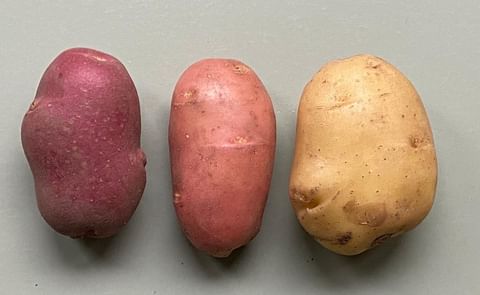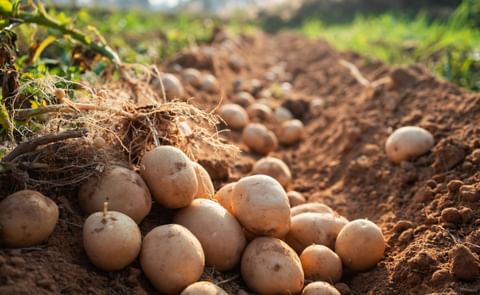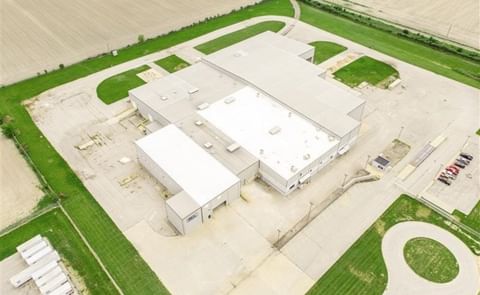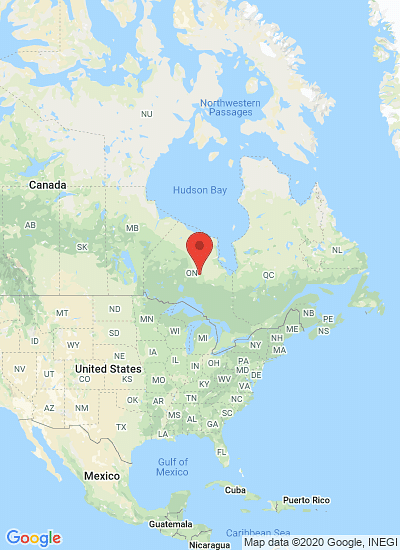Dr. Eugenia Banks, a potato specialist, shows off a handful of Alliston potatoes that were grown in a trial area in a field on 12th Line of New Tecumseth. The new variety was created by a potato breeder from Quebec named Andre Gagnon, and in mid-July, it was registered with the name Alliston with the Canadian Food Inspection Agency (Courtesy: Brad Pritchard/Torstar)
New Canadian potato variety named after Alliston, spud capital of Ontario
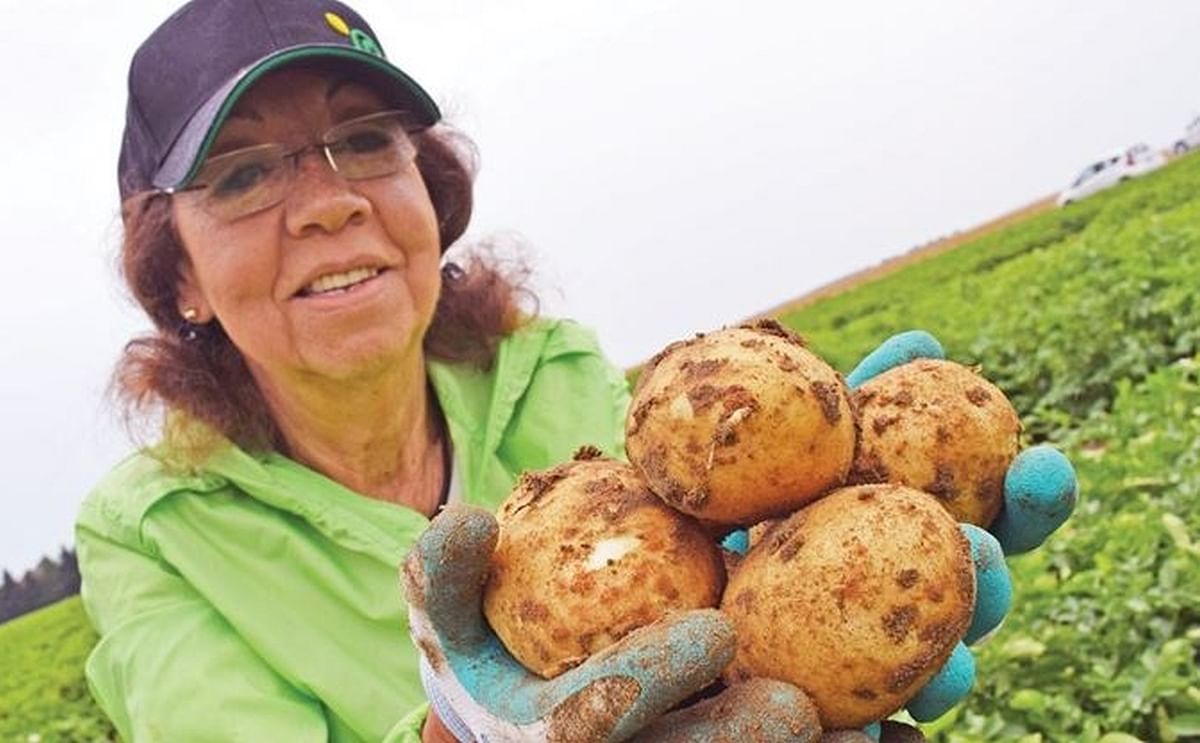
In mid-July, a new variety of potato named Alliston was officially registered with the Canadian Food Inspection Agency, making it the first tater in history to take its name from the potato capital of Ontario.
The new variety was developed by a potato breeder from Quebec named Andre Gagnon. Gagnon wanted to create a spud with a round to oval shape, smooth skin, white flesh, with an early maturity and resistance to the common scab, the most common potato disease in the province.
The entire process from development to registration took about a decade to complete, according to Dr. Eugenia Banks, a potato specialist with the Ontario Potato Board.
Banks first got her hands on the variety in 2014, and she planted them for three consecutive years in a field at C&V Farms.
Eugenia Banks:
In order for a new variety to become viable for large-scale production, she said they are put through a “gauntlet” of challenges they must meet or exceed. The trial starts in the field, but it doesn’t end there.
Eugenia Banks:
Eugenia Banks:
Banks describes the Alliston variety as “very tasty,” having a starch content similar to a Yukon Gold potato, making it versatile for just about any type of cooking, from mashing and roasting, to frying.
If Alliston continues to show promise, Banks said more farmers will take notice, which could lead to the variety being grown on a larger scale.
The new variety was developed by a potato breeder from Quebec named Andre Gagnon. Gagnon wanted to create a spud with a round to oval shape, smooth skin, white flesh, with an early maturity and resistance to the common scab, the most common potato disease in the province.
The entire process from development to registration took about a decade to complete, according to Dr. Eugenia Banks, a potato specialist with the Ontario Potato Board.
Banks first got her hands on the variety in 2014, and she planted them for three consecutive years in a field at C&V Farms.
Eugenia Banks:
“One line performed very well in Alliston, so well that André told me that if the line was ever registered, he would name it Alliston, and so he did!”Potato breeders are constantly looking to develop new varieties that are easier to grow and are more resistant to disease.
In order for a new variety to become viable for large-scale production, she said they are put through a “gauntlet” of challenges they must meet or exceed. The trial starts in the field, but it doesn’t end there.
Eugenia Banks:
“I have seen a few varieties that made it all the way through the rigorous selection process only to fall victim to problems with fusarium dry rot or some other issue that never surfaced despite all the years of testing.”It takes a decade or longer to determine whether a new variety is viable.
Eugenia Banks:
“After the initial cross has been made, much of those 10 to 12 years are required to perform all the testing required to determine how the candidate varieties perform.”Last but not least, a new variety has to pass the human taste test.
Banks describes the Alliston variety as “very tasty,” having a starch content similar to a Yukon Gold potato, making it versatile for just about any type of cooking, from mashing and roasting, to frying.
If Alliston continues to show promise, Banks said more farmers will take notice, which could lead to the variety being grown on a larger scale.
Like to receive news like this by email? Join and Subscribe!
NEW! Join Our BlueSky Channel for regular updates!
Sponsored Content
Sponsored Content
Sponsored Content
Sponsored Content
Sponsored Content

